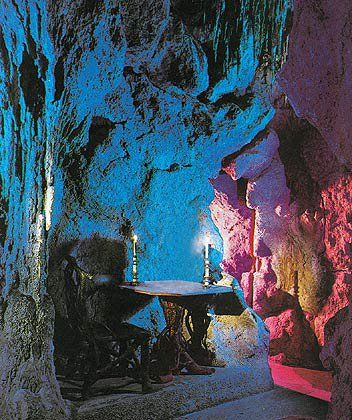Neuschwanstein Castle: The Fairy-Tale Fortress Of King Ludwig II
Neuschwanstein Castle is located on a cliff at an altitude of 965m, rising above the forest at the foot of the Alps in the state of Bavaria, southern Germany.
The castle, dubbed “New Schwanstein,” was built by King Ludwig II of Bavaria. It embodies Ludwig’s romantic obsession with medieval German history and his love for opera, particularly the works of Richard Wagner.
King Ludwig II
King Ludwig II of Bavaria, often referred to as the “Mad King” or the “Swan King.” He was also known as “Fairytale King” due to his enchanting castle projects.
Born on August 25, 1845, he ascended to the throne at the young age of 18 following the death of his father, King Maximilian II, in 1864.
Ludwig was a deeply romantic and artistic soul, with a profound appreciation for beauty, fantasy, and the arts.
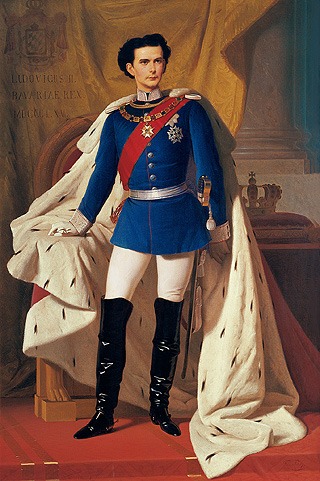
Why did King Ludwig II build Neuschwanstein Castle?
King Ludwig II ruled from 1864 to 1886.
He decided to build a home near the castle he grew up in, known as Hohenschwangauto, to retreat and get away from the sycophants who plagued him.
What was the inspiration for the Neuschwanstein Castle?
The inspiration for Neuschwanstein Castle came from King Ludwig II’s love for the opera and fairy tales.
From a young age, King Ludwig II was captivated by the works of composer Richard Wagner’, whose operas often depicted romanticized medieval themes.
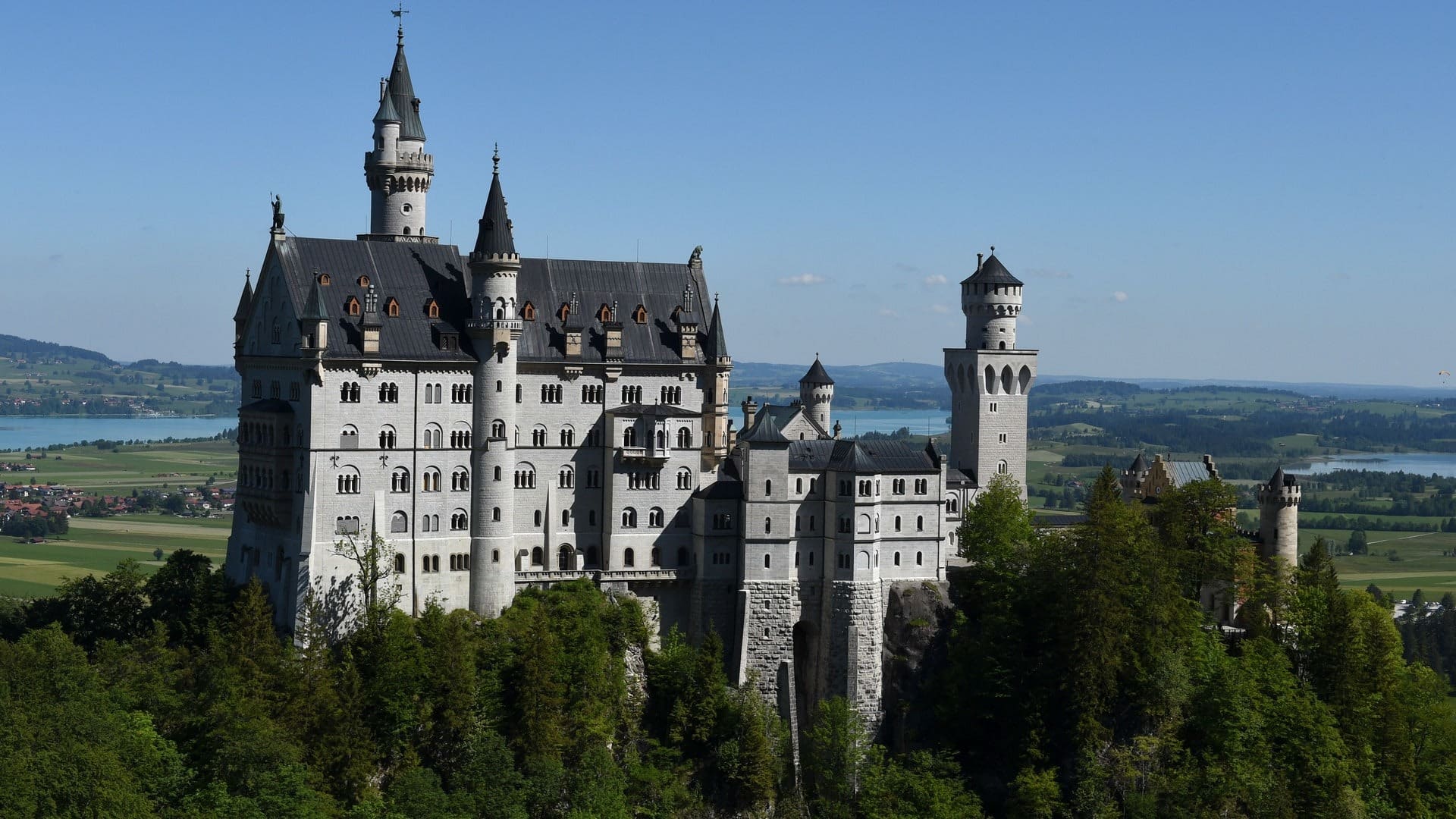
Source: Chrisof Stache
“Neuschwanstein” means “New Swan Stone,” and the castle’s design was heavily inspired by the tale of the Swan Knight, Lohengrin.
In 1868, the king expressed his vision to composer Richard Wagner, stating, “It is my intention to rebuild the old castle ruin of Hohenschwangau near the Pöllat Gorge, in the authentic style of the old German knights’ castles.”
He eagerly anticipated residing there, describing the location as “one of the most beautiful to be found, holy and unapproachable.” It’s evident Ludwig aimed to surpass his father’s neo-Gothic castle at Schwanstein and the Wartburg in Thuringia, known for its medieval grandeur.
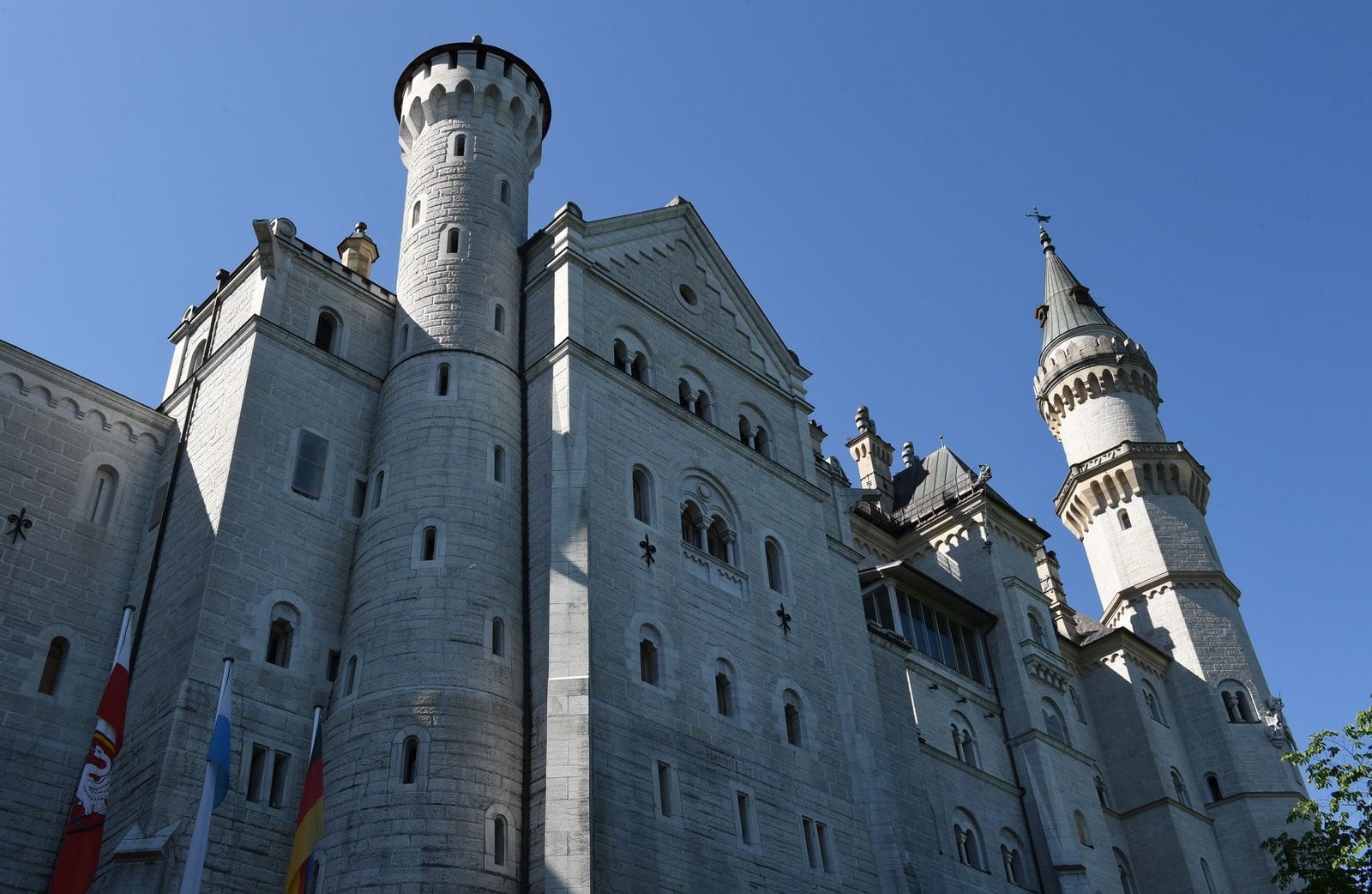
Source: Chrisof Stache
Hohenschwangau Castle from Neuschwanstein
In this picture, we can see the tall mountains of the Austrian Tyrolean Alps, the sparkling Alpsee Lake, and on the right side, Hohenschwangau Castle. That’s where King Ludwig II grew up.
His dad, King Maximilian, built this castle to replace the old one called Schwanstein.
This photo was taken from Neuschwanstein, which means “New Schwanstein Castle.”
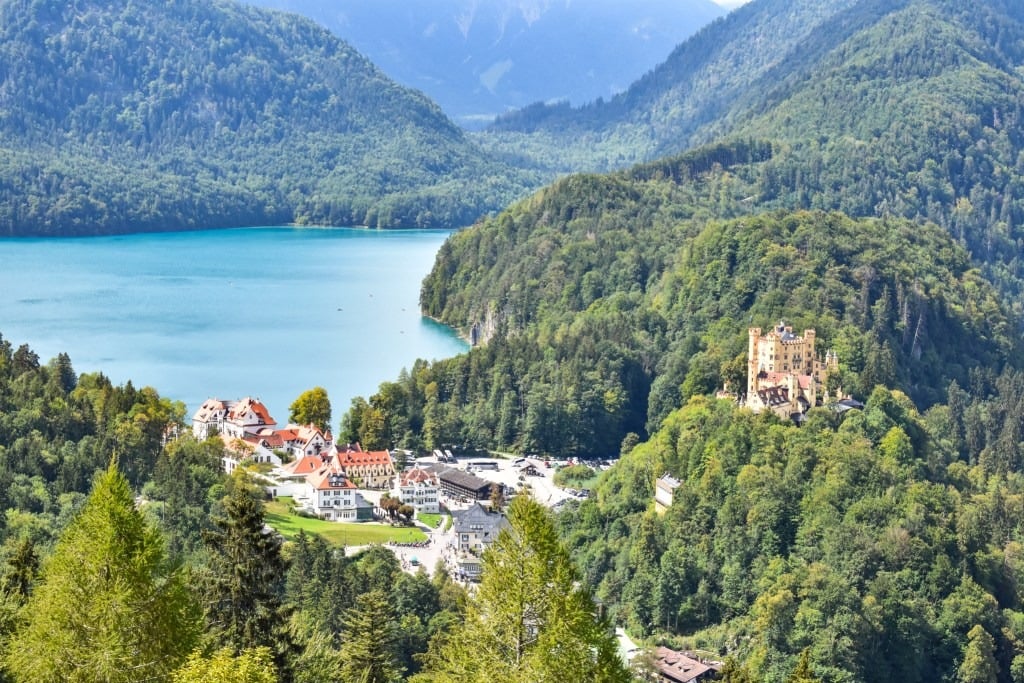
The construction of the Neuschwanstein castle
The construction of the Neuschwanstein castle began in 1869. Ludwig was deeply involved in the design and construction process, personally approving each draft of the plans. The castle was built on a rugged hilltop near the village of Hohenschwangau, overlooking the picturesque Bavarian countryside.
To realize his vision of a fairy-tale retreat, Ludwig hired a famed named Eduard Riedel and theatrical set designer Christian Jank.
The design of the castle was inspired by romanticized medieval architecture, with elements of Romanesque Revival and Gothic styles.
Construction materials were sourced locally whenever possible, with limestone quarried from nearby Mount Tegelberg used for the exterior facade. Skilled craftsmen and artisans were employed to create the intricate wood carvings, ornate decorations, and colorful murals that adorn the interior of the castle.
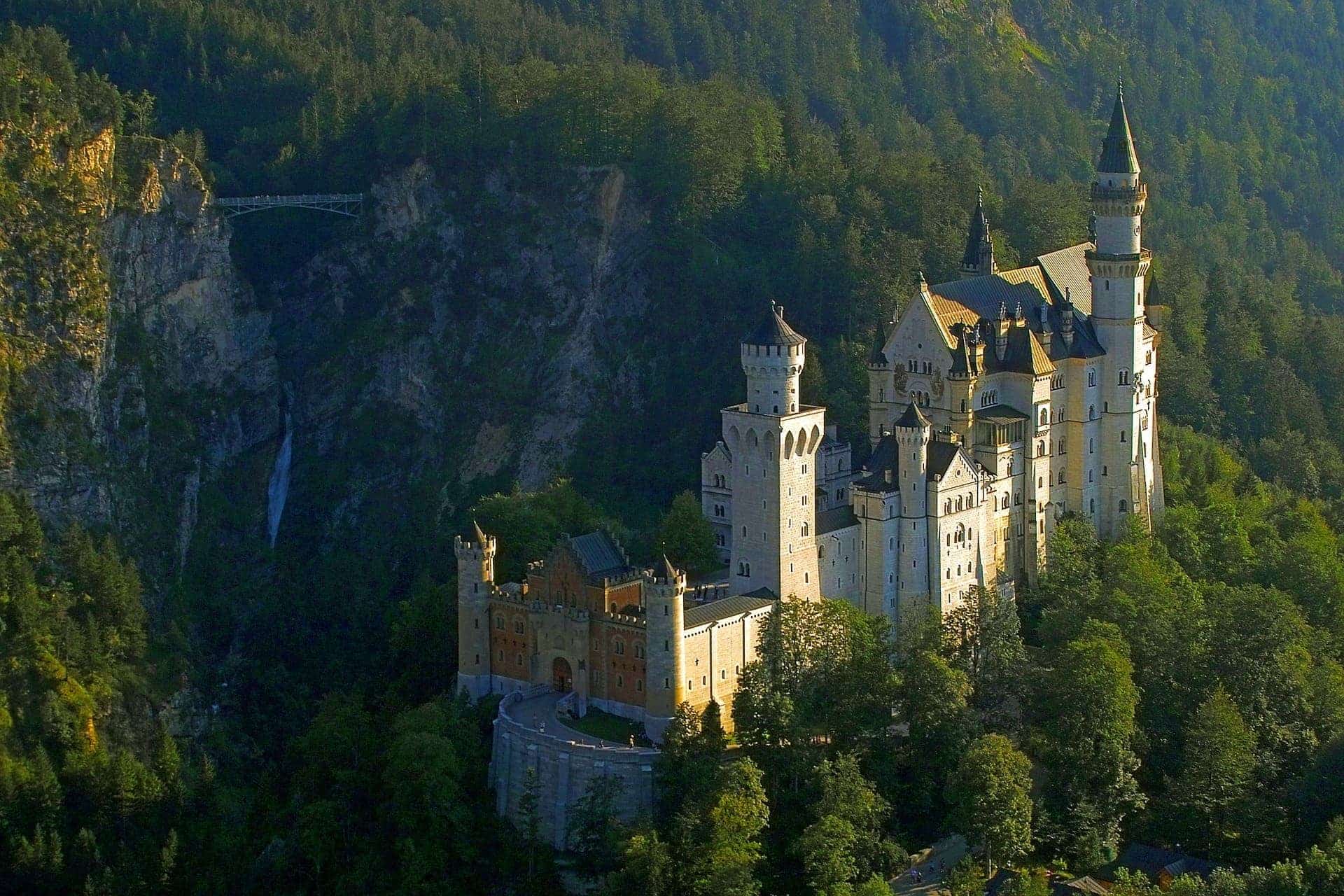
However, the construction of Neuschwanstein Castle was never fully completed. Building the castle made Ludwig nearly bankrupt the monarchy. To push him off the throne, people said he was insanely crazy.
He was arrested in his bedroom in his unfinished castle. He then was taken to another palace in Munich.
The next day, he went for a walk with his psychiatrist, and later that evening, they were both found dead. No one ever figured out what happened.
After Ludwig’s death, construction on the castle was halted, and it was opened to the public as a museum.
Architecture Of the Neuschwanstein Castle
Neuschwanstein Castle’s architecture is a captivating blend of romanticism and medieval fantasy.
Neuschwanstein gatehouse
The entrance to Neuschwanstein is a formidable gateway flanked by towering walls and turrets, evoking a sense of medieval grandeur.
Visitors pass through this imposing gate, which leads to the inner courtyard of the castle.
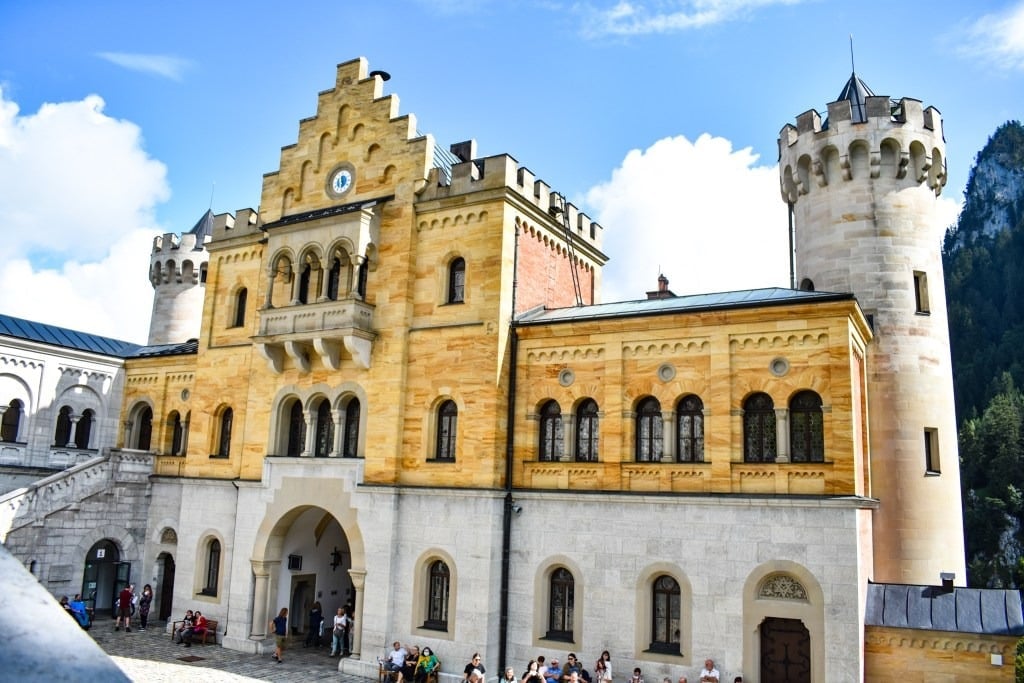
The internal courtyard
Upon entering through the main gate, visitors find themselves in the inner courtyard, a spacious and picturesque area surrounded by the castle’s towering walls and majestic towers.
The courtyard offers stunning views of the surrounding Bavarian landscape, including lush forests, rolling hills, and the distant Alps.

Source: Education Images
Gargoyles on the outside of the castle
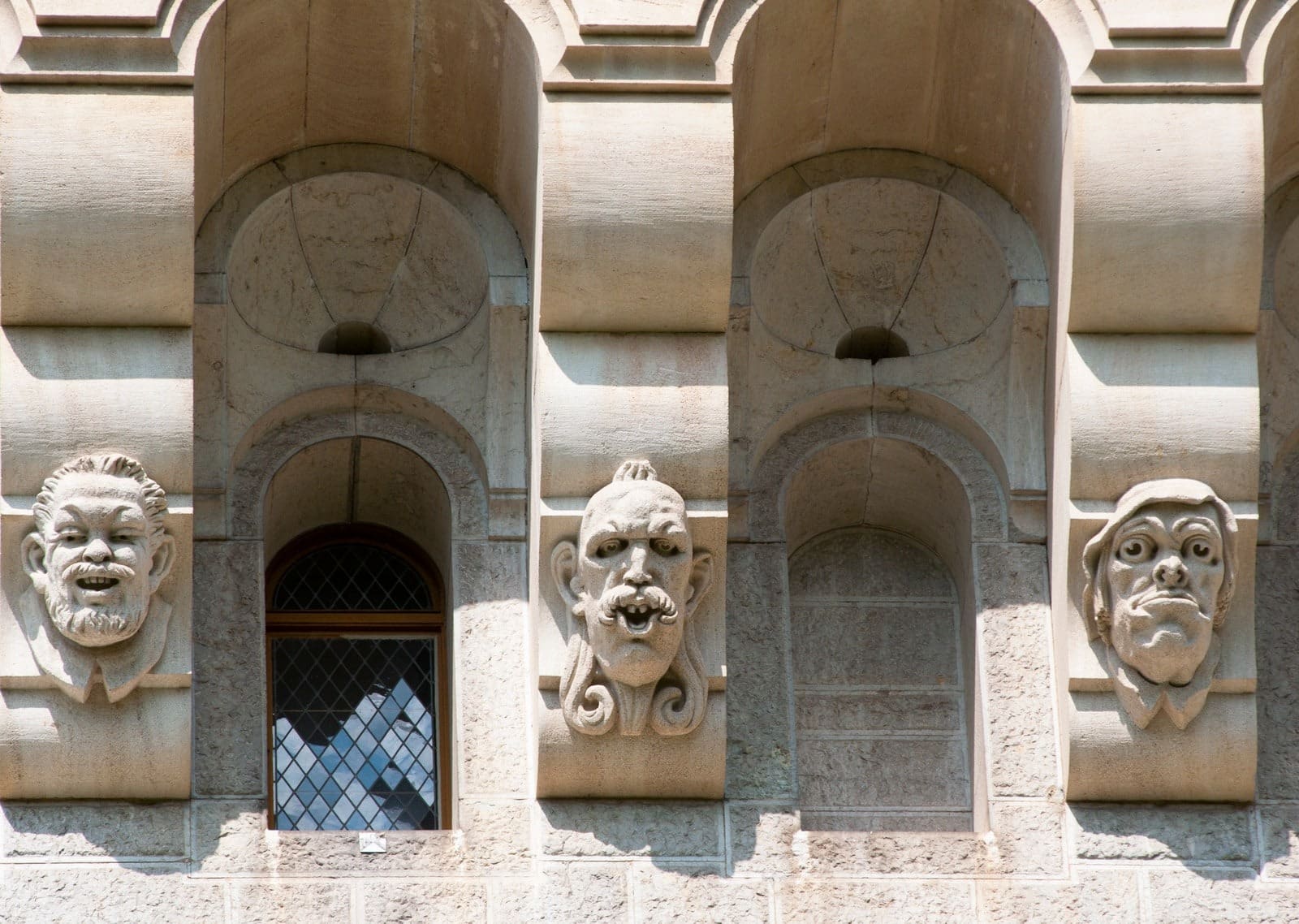
Source: Education Images
King’s Bedroom
Ludwig’s private quarters are a testament to his romantic sensibilities, with ornate furnishings, rich tapestries, and a canopy bed fit for a king.
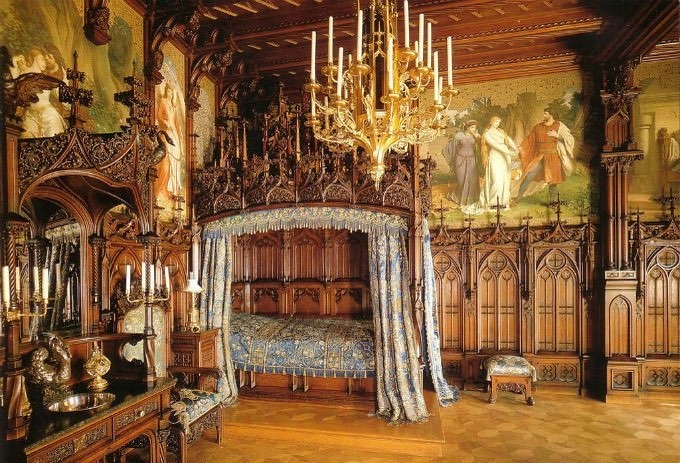
Source: neuschwanstein.castle
The Throne Room
This is a photograph of the Throne Room in Neuschwanstein Castle.
It’s a magnificent room, but there’s something missing – the throne!
It was not finished before Ludwig’s death. After he died, they decided to stop working on it altogether.

Salon inside Neuschwanstein Castle
This grand salon is adorned with luxurious furnishings, intricate decorations, and ornate details.
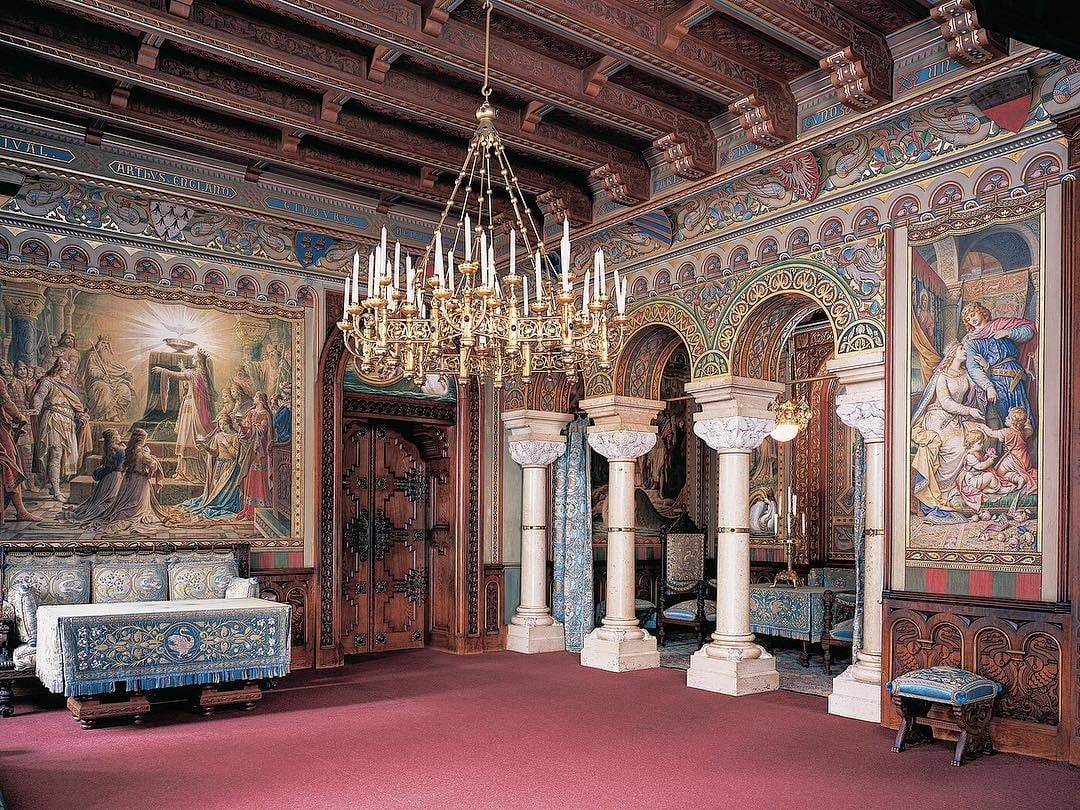
Source: neuschwanstein.castle
Interior Design
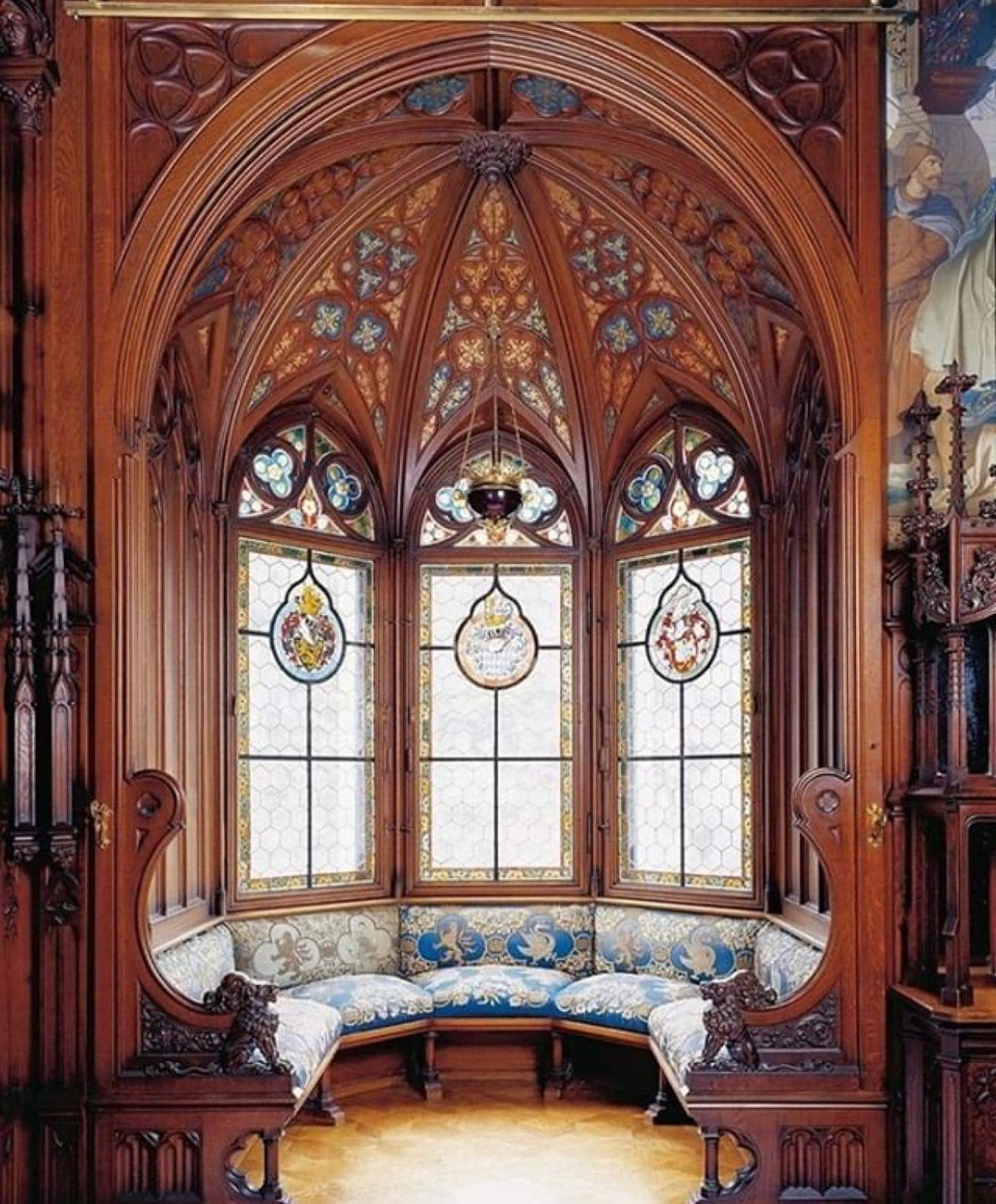 Source: neuschwanstein.castle
Source: neuschwanstein.castle
The Gothic-style study of King Ludwig II
Ludwig’s study is a cozy retreat adorned with bookshelves, writing desks, and plush armchairs.
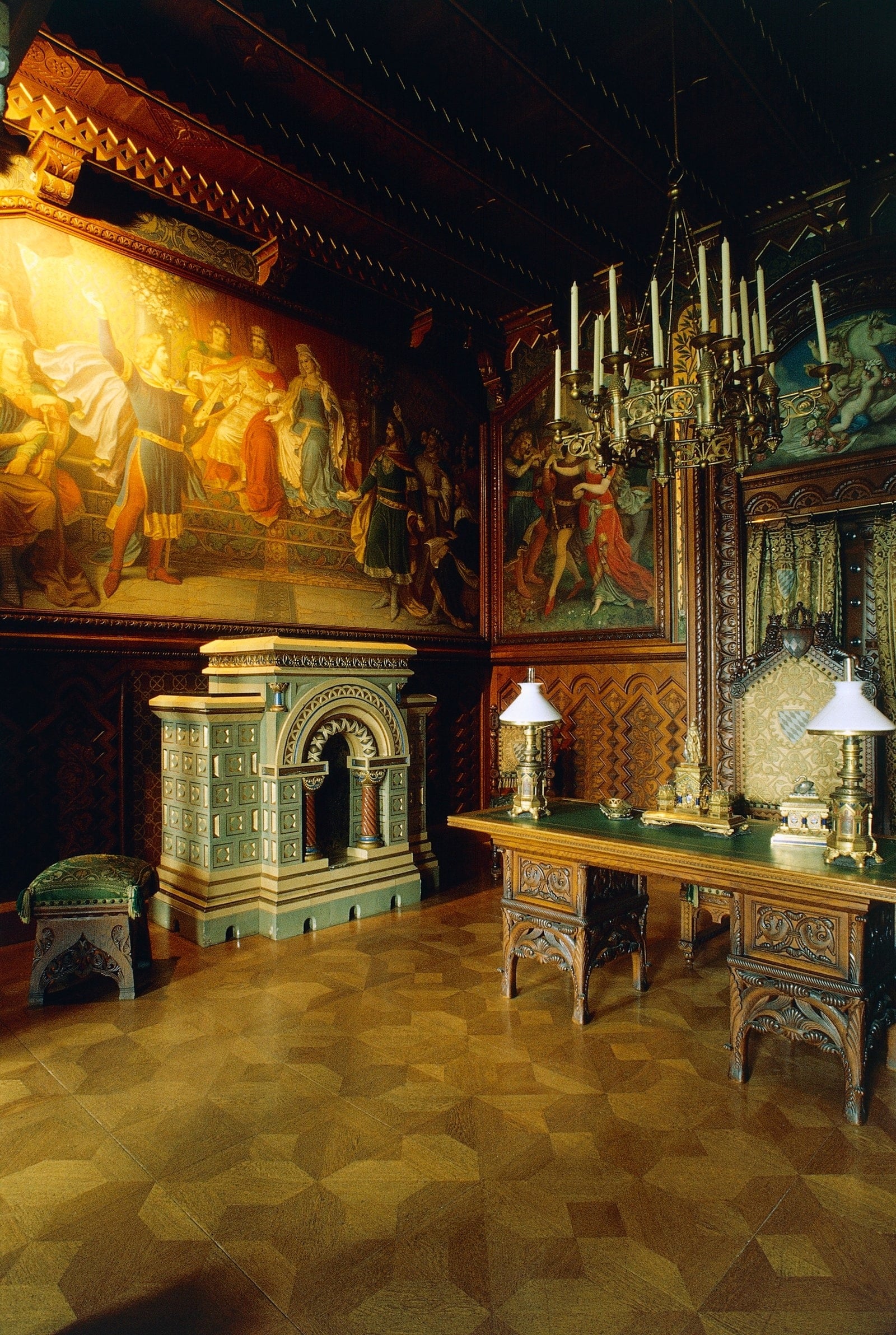
Dining Room

Singer’s Hall
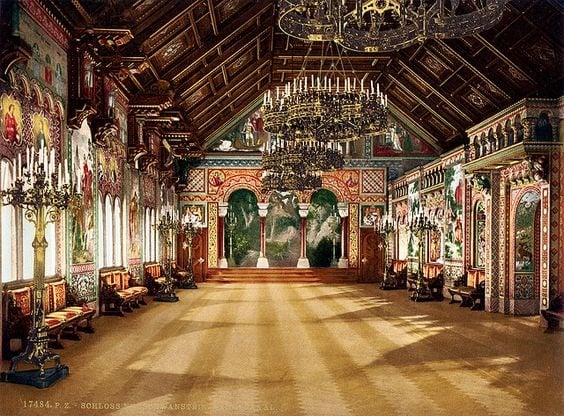
Cave
Ludwig loved opera, especially the music of Richard Wagner. He built Neuschwanstein Castle as a tribute to Wagner’s operas.
He also had a small grotto made on the castle grounds. It was like a tiny stage where he could imagine scenes from his favorite operas whenever he wanted.
